|
|
| |
| Padma Perfumery Works Replenish your senses! |
| Rose Incense |
White Musk Incense |
Al Oudh Incense |
Sheik Al Arab Blue |
Jasmine Incense |
|
|
|
|
|
 |
 |
 |
 |
 |
|
|
|
Guggul
 Guggul is considered to be the most widely used herb in Ayurveda. It has been used since the commencement of recorded history ormaybe before, for its aromatic and medicinal properties. Guggul, in Sanskrit means "one that protects against germs" and refers to the plant as a whole, its derivatives as well as all the preparations that contain it as the primary ingredient. It has a spicy vanilla like fragrance which is known to uplift mood, strengthen concentration, enhance positive energy and invokes the root chakra. Guggul is considered to be the most widely used herb in Ayurveda. It has been used since the commencement of recorded history ormaybe before, for its aromatic and medicinal properties. Guggul, in Sanskrit means "one that protects against germs" and refers to the plant as a whole, its derivatives as well as all the preparations that contain it as the primary ingredient. It has a spicy vanilla like fragrance which is known to uplift mood, strengthen concentration, enhance positive energy and invokes the root chakra.
Origin
The guggul resin is obtained from a flowering plant called the Mukul Myrrh, belonging to the Burseraceae family. These thorny plants are indigenous to India but now are also commercially cultivated in various parts of Africa and central Asia. The mukul tree is basically a small shrub that grows to a height of 6-7 feet with simple or trifoliate leaves and bears red to pink flowers with pink petals. the resin is secreted as a yellowish sap and is is obtained by tapping the dark papery barks of these trees.
Biological Specificationof the Guggul plant
- Kingdom : Plantae
- Classifications : Angiosperms, Eudicots, Rosids
- Order : Sapindales
- Family : Burseraceae
- Genus : Commiphora
- Species : C. wightii
Types
Although Ayurveda and traditional Unani categorizes guggul according to its color ( viz. Black, Blue, Lotus, Ruby and Golden ), there are only two commercially available forms of guggle :
- Kana Guggula : The granular form with reddish yellow color is soft on touch. It is found in Marawada region of Rajasthan state.
- Bhainsa Guggula : Greenish yellow colored variety is smooth on touch. It is found in Kachha region.
 Active Chemical Compounds Active Chemical Compounds
- Resin
- Volatile oils
- Gum
- Guggulsterones
- C21 Steroids or C27 steroids
- Z- guggulsterone and E- guggulsterone
- Phytosterols
Uses
Other then using for its aromatic properties, guggul is highly valued and employed for its medicinal attributes. It's classic use is reducing obesity and other lipid oriented disorders owing to its high guggulsterone content. It is also an excellent remedy for high cholesterol or triglyceride levels and is efficient in treating atherosclerotic vascular diseases.
|
|
|


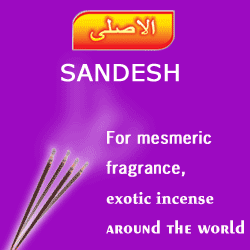
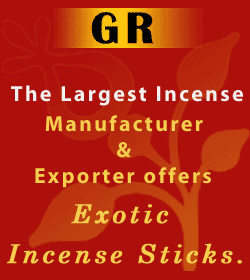
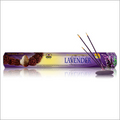
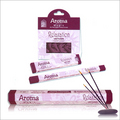
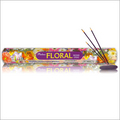
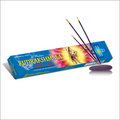
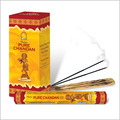
 Guggul is considered to be the most widely used herb in Ayurveda. It has been used since the commencement of recorded history ormaybe before, for its aromatic and medicinal properties. Guggul, in Sanskrit means "one that protects against germs" and refers to the plant as a whole, its derivatives as well as all the preparations that contain it as the primary ingredient. It has a spicy vanilla like fragrance which is known to uplift mood, strengthen concentration, enhance positive energy and invokes the root chakra.
Guggul is considered to be the most widely used herb in Ayurveda. It has been used since the commencement of recorded history ormaybe before, for its aromatic and medicinal properties. Guggul, in Sanskrit means "one that protects against germs" and refers to the plant as a whole, its derivatives as well as all the preparations that contain it as the primary ingredient. It has a spicy vanilla like fragrance which is known to uplift mood, strengthen concentration, enhance positive energy and invokes the root chakra.  Active Chemical Compounds
Active Chemical Compounds
